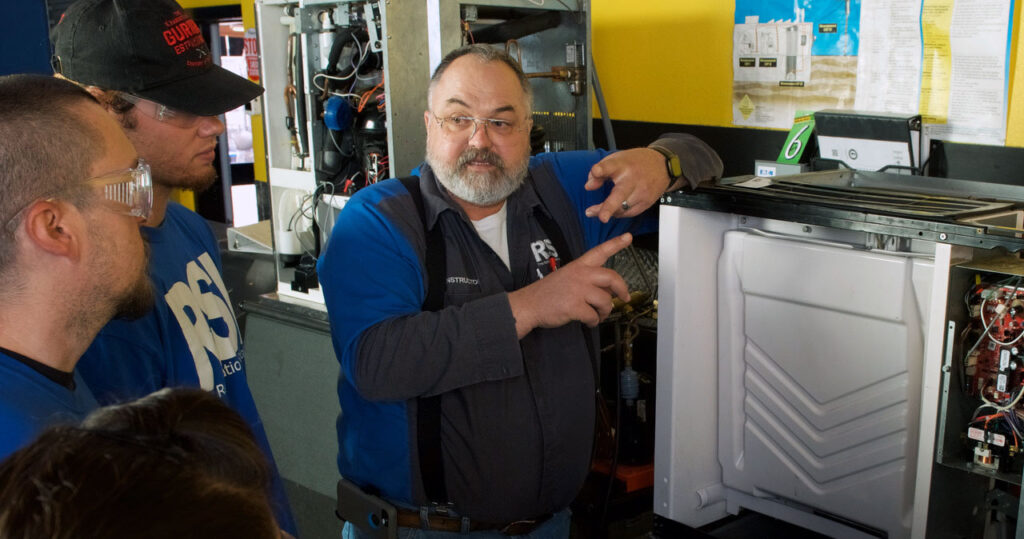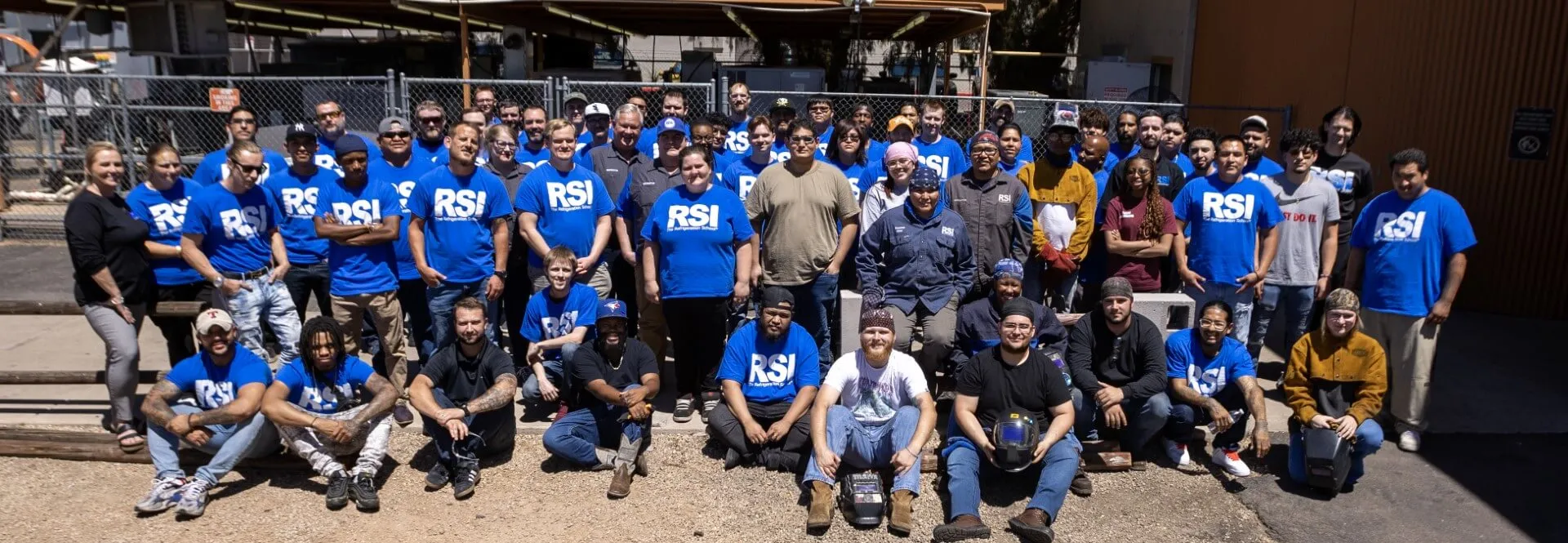RSI is a Great Training Option for Everyone
Learn more about how we can prepare you to advance your career.
Like most career paths, becoming an electrician can require a certain degree of training and experience.
While there is no one-size-fits-all solution, you can certainly weigh your options and decide which electrician career path is best for you.
Keep reading for a look at the steps commonly taken to become an electrician.
Electrician Career Path Overview
Electricians generally follow a pretty straightforward career path. In simplified terms, here’s how many individuals go about becoming an electrician:
Step 1: Begin training at a trade school and/or apprenticeship
You usually need to be 18 years or older to begin electrician training, and you must have a high school diploma or equivalent, like a GED. Then, you can enroll in an electrician trade school or apply to an apprenticeship program.1
Get Started on the Path to a New Career
Fill out our form to learn how we can help you change your life.
Step 2: Work the required number of hours to complete apprenticeship training1
The specific requirements may vary by location, but electrician apprenticeships may require around 8,000 hours of on-the-job experience, or about 4-5 years.
Apprenticeships generally also include classroom instruction. Some trade school credits may be applied toward apprenticeship hours.
Step 3: Pass the journeyman exam
After completing an apprenticeship, you can then take the journeyman licensing exam. Once you have a journeyman license, you are qualified to work as a journeyman electrician, which means you can work on residential, commercial or industrial electrician jobs as an independent technician or employee.1
Step 4: Become a master electrician (optional)
After working at least two years as a journeyman, or around 4,000 hours, you can then be eligible to take the master electrician exam, which is the highest level of electrician certification and licensing.1
Not everyone chooses to take the master electrician exam. It is entirely possible to continue an electrician career without it. But, in order to run your own business or supervise other electricians, a master-level license is typically required.2
Where to Start as an Aspiring Electrician

However you choose to pursue a career wiring the world, the following 2 steps will likely be necessary.
Step 1. Graduate from High School or Pass the GED
The very first requirement to starting on a career path as an electrician is to make sure you are of age (at least 18 years old) and have the equivalent of a high school diploma. If you do not have a high school diploma, a General Educational Development (GED) credential will work equally as well.
So, if you have not done it already, you will want to find out your particular state’s GED requirements, then sign up for the test, study and pass the exam.3 If you graduated high school, you do not need to take the GED.
Step 2. Enter into an Electrician Training Program
Once you have your GED or high school diploma, the next step is to determine what kind of electrician training program you want to enter. There are different types of programs, which can vary by career specialty, duration, type of institution and state requirements.
Here are some considerations for choosing an electrician training program that’s right for you:
Type of Program
There are many sub-fields in the electrical trade, so if you already know you want to work in one type of specialty over another, make sure to choose a program that offers that particular focus.
For example, the job duties for a residential electrician can be very different from an electrician working on transmission lines.
The Refrigeration School offers, for instance, a 3-month introductory program to prepare students for an apprenticeship or entry-level job specifically as a maintenance electrician, power plant field technician or new construction electrician.
Duration of Program
Different trade schools and apprenticeships may offer different lengths of study, so be sure to check with your specific state and region to determine what your journeyman requirements are.2
For example, an apprenticeship may require 8,000 hours of paid work alongside classroom instruction, yet some trade schools offer credits toward an apprenticeship.
Attending a trade school can be a great way to gain an introduction to the field and be a more competitive applicant for an apprenticeship.4
Consider if you plan to attend a trade school before applying for an apprenticeship, and how long the program will be, as well as if those training hours will count towards an apprenticeship. A trade school program could be worth investing in before an apprenticeship.
Type of Institution
Businesses, unions or contractor associations might offer or sponsor apprenticeships that prepare apprentices for a state-issued journeyman license.
However, there are also some training programs that are offered independently, with their own technical and on-the-job training.
State and Local Requirements
Above all, make sure to understand what the specific career requirements are for electricians in your area, including both local municipalities and state licensing.
This will help you make the important decisions of which training programs and apprenticeships will allow you to fulfill your government’s licensing requirements.
Research. Learn. Enroll. Apply.
The best way to become an electrician, at the end of the day, is to begin by researching what types of licenses are required for electricians in your region.
Then, consider what type of electrical professional you might want to be, and if you have a specific interest.
Next, find a program that will suit your interests and needs. This might mean enrolling in a trade school for electrician training and/or applying for an electrical apprenticeship.
Benefits of Trade School Electrician Training
There can be advantages to completing a trade school electrician training program before applying for an apprenticeship.
Classroom and hands-on instruction can show you the fundamentals of electricity and other relevant subjects before beginning paid work. This can give you an advantage over your competition, as well as build your skillset and confidence as you enter into an exciting electrician career.
Additional Sources
1. https://www.bls.gov/ooh/construction-and-extraction/electricians.htm#tab-4
2. https://www.electricianschooledu.org/state-by-state-licensing-guide/
3. https://www.test-guide.com/how-to-get-ged.html
4. https://www.trade-schools.net/articles/become-an-electrician
This blog has been labeled as archived as it may no longer contain the most up-to-date data. For a list of all current blog posts, please visit our blog homepage at https://www.rsi.edu/blog/




